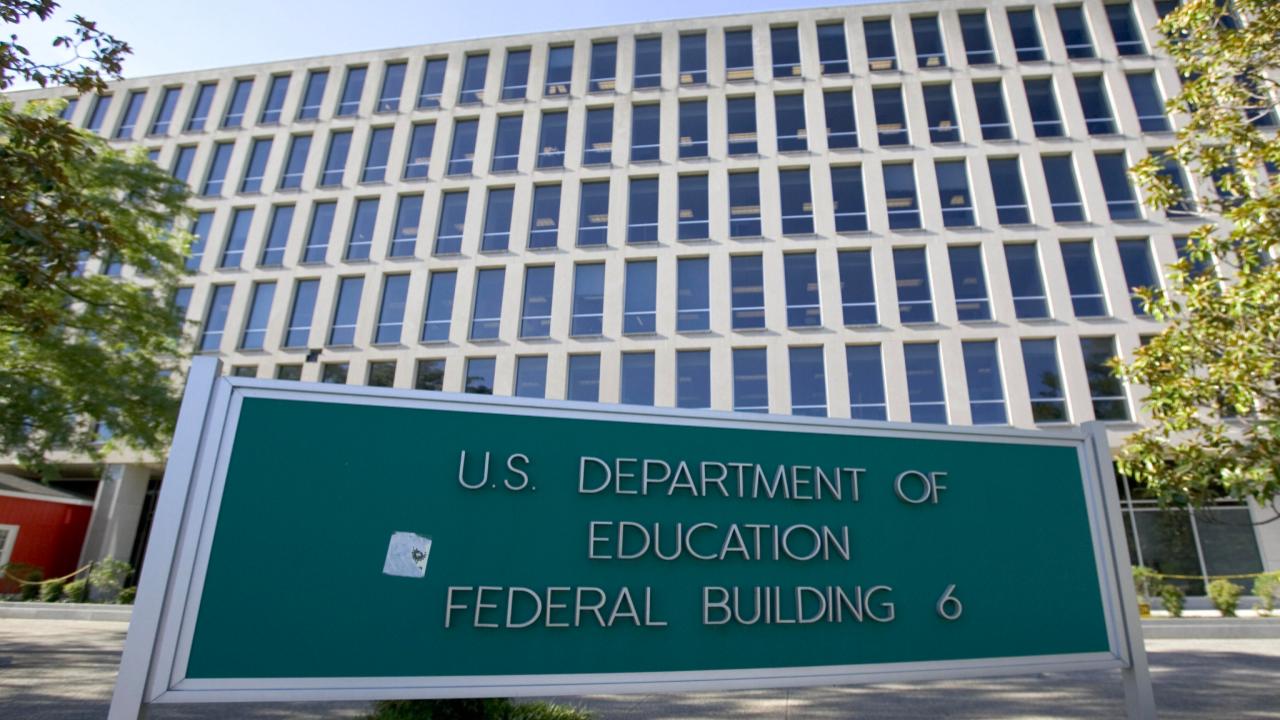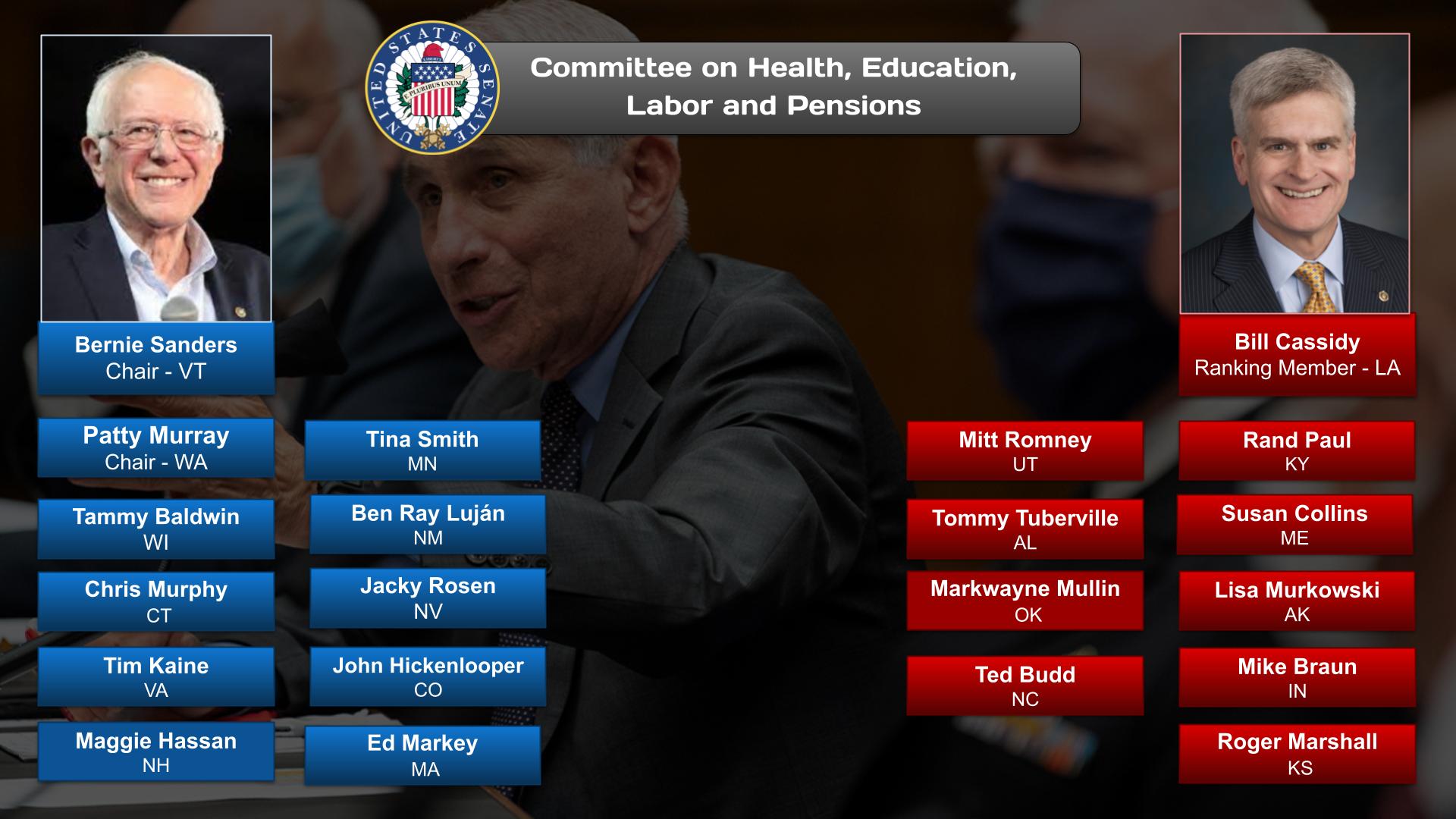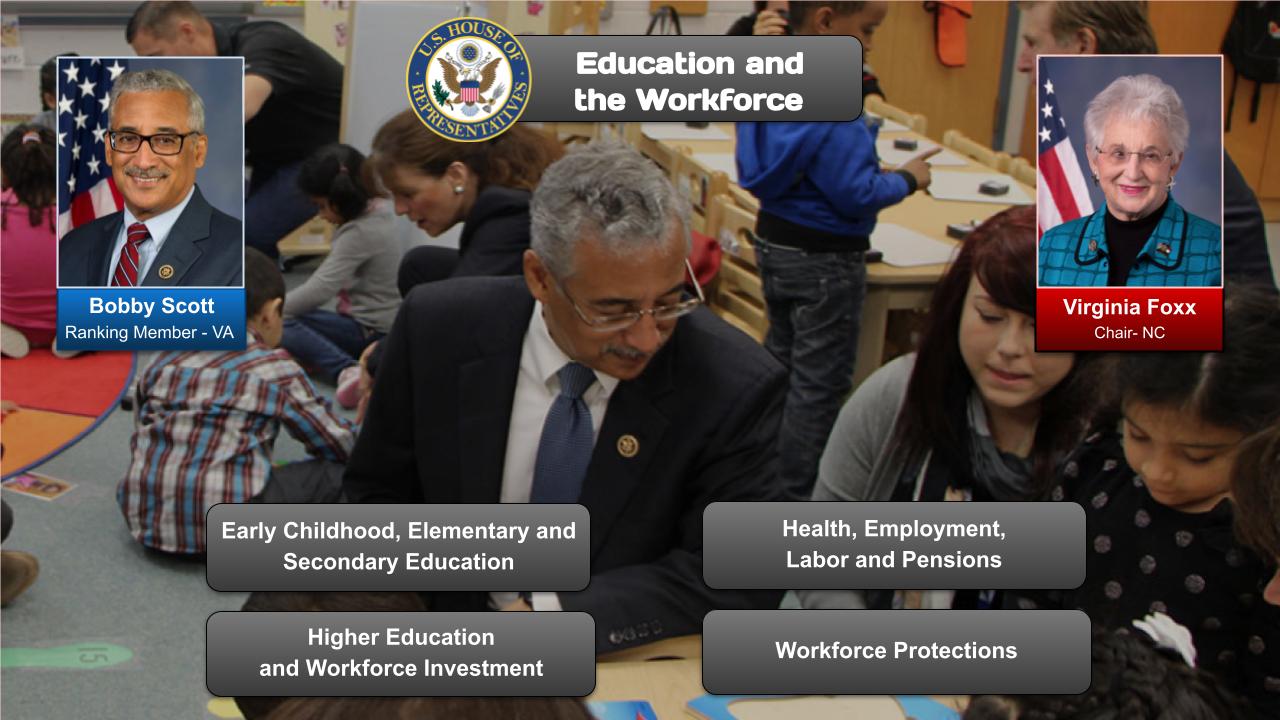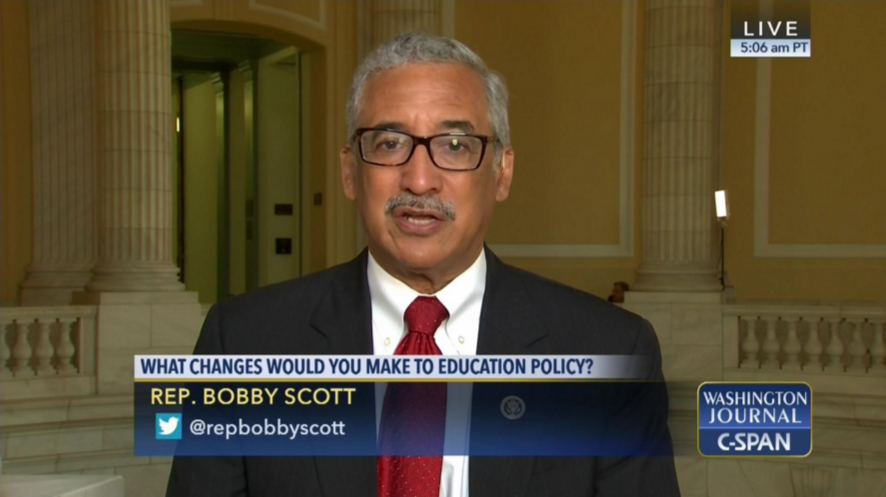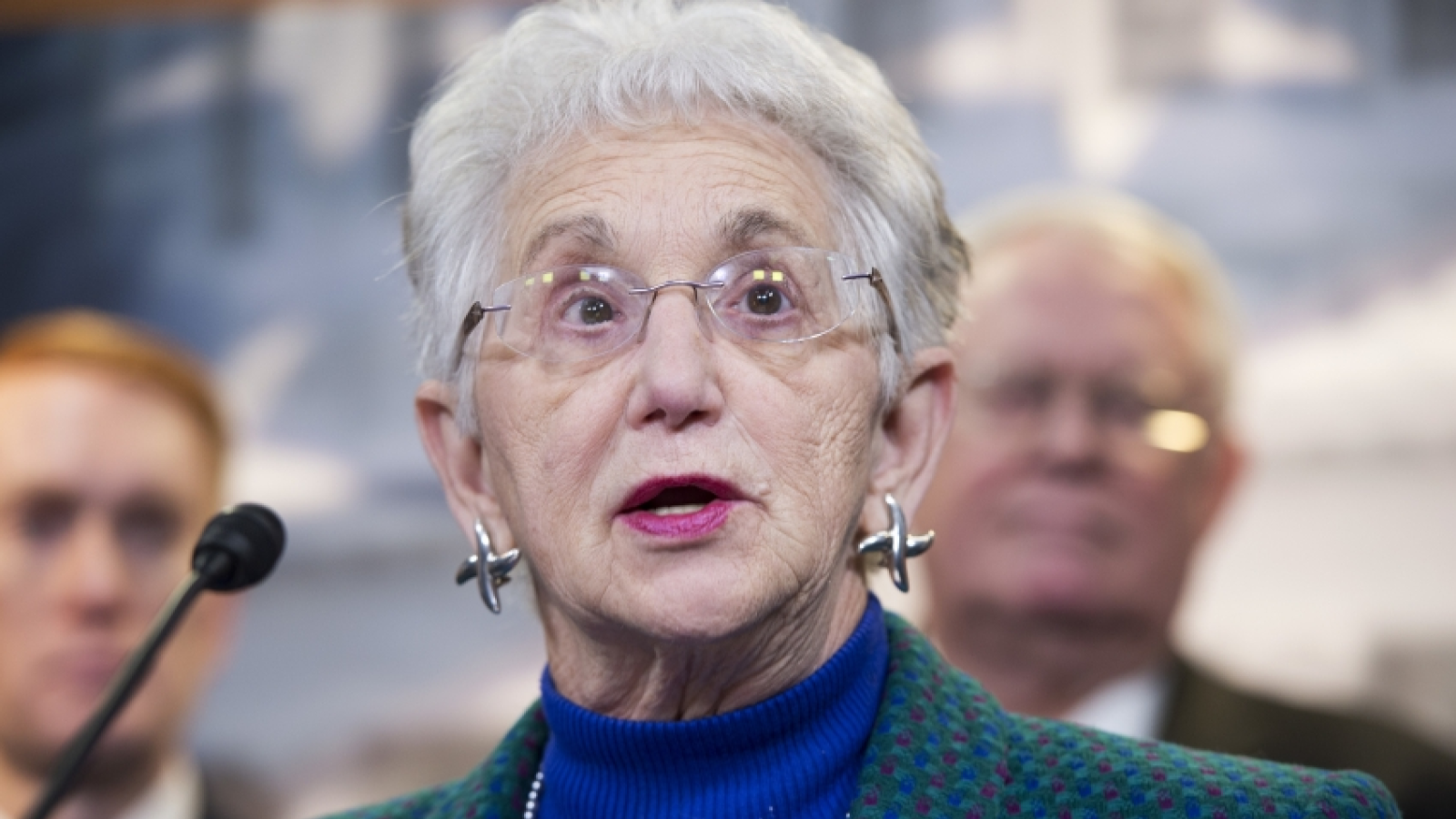Summary
This post on STEM Learning is 1 of 3 issues that US onAir curators are focusing on in the Education category.
Science, technology, engineering, and mathematics (STEM) is an umbrella term used to group together the distinct but related technical disciplines of science, technology, engineering, and mathematics. The term is typically used in the context of education policy or curriculum choices in schools. It has implications for workforce development, national security concerns (as a shortage of STEM-educated citizens can reduce effectiveness in this area), and immigration policy, with regard to admitting foreign students and tech workers.
OnAir Post: STEM Learning
News
At an after-school STEM club in Rhode Island, students are working on an engineering challenge — because they want to be. The low-stakes, fun environment offers time for exploration when resources or hands-on activities may be in short supply during school hours, and can help sustain interest as classes get harder. Special correspondent Lisa Stark of Education Week reports.
About
Check the Education post for the party positions, committees, government agencies related to STEM Learning issues.
Challenges
Equity and Inclusion:
- Ensuring access and participation for underrepresented groups (e.g., women, minorities, students from low-income backgrounds)
- Creating inclusive learning environments that address systemic biases and stereotypes
Teacher Capacity and Development:
- Preparing teachers with the knowledge and skills to effectively teach STEM concepts
- Providing ongoing professional development to support teachers in implementing innovative teaching methods
Curriculum Coherence and Relevance:
- Developing curricula that align with real-world applications and career pathways
- Integrating STEM concepts across disciplines and grade levels to foster interdisciplinary learning
Assessment and Evaluation:
- Designing assessments that measure student understanding of STEM concepts and skills
- Providing timely and meaningful feedback to students to support their learning
Materials and Resources:
- Ensuring access to high-quality STEM materials and resources, including technology, manipulatives, and hands-on activities
- Allocating sufficient funding to support STEM education initiatives
Collaboration and Partnerships:
- Fostering partnerships between schools, universities, businesses, and community organizations
- Leveraging resources and expertise to enhance STEM learning opportunities
Public Engagement and Outreach:
- Raising awareness about the importance of STEM education
- Engaging the broader community in STEM initiatives to promote interest and support
Data-Driven Decision Making:
- Collecting and analyzing data to inform decision-making and improve STEM learning outcomes
- Using data to identify areas of strength and weakness and target interventions
Policy and Funding:
- Advocating for policies that support STEM education
- Securing funding to implement STEM initiatives and programs
Global Challenges:
- Addressing educational disparities and promoting STEM learning in developing countries
- Collaborating internationally to share best practices and resources
Source: Google Search + Gemini + onAir curation
Solutions
Foster Early Interest and Exploration:
- Introduce STEM concepts through hands-on activities in early childhood.
- Provide opportunities for exploration and tinkering to spark curiosity.
- Create STEM-rich environments with engaging toys and materials.
2. Enhance Teacher Capacity:
- Provide professional development programs to empower teachers with STEM knowledge and pedagogical skills.
- Support teachers with access to resources and mentorship programs.
- Foster collaboration among teachers to share best practices and support each other.
3. Integrate STEM into Curriculum:
- Align STEM concepts with core subjects to make learning meaningful.
- Use hands-on projects and real-world applications to connect STEM to students’ interests.
- Provide differentiated instruction to meet the needs of all learners.
4. Create Collaborative Learning Environments:
- Encourage group work and peer learning to foster collaboration and problem-solving skills.
- Use online platforms to connect students with experts and scientists.
- Organize STEM clubs and after-school programs to provide additional support and enrichment.
5. Leverage Technology:
- Incorporate educational software, simulations, and robotics into lessons.
- Provide access to virtual laboratories and online resources to enhance learning experiences.
- Use social media and online communities to connect students with STEM professionals.
6. Provide Career Exposure:
- Introduce students to STEM careers through field trips and guest speakers.
- Offer internships and apprenticeships to provide real-world experiences.
- Highlight the importance of STEM skills in various industries.
7. Foster Inclusivity and Diversity:
- Create welcoming and supportive learning environments that value all students regardless of gender, race, ethnicity, or socioeconomic status.
- Provide access to STEM materials and programs for underserved populations.
- Showcase role models from underrepresented groups in STEM fields.
8. Address Gender Disparities:
- Encourage girls to engage in STEM activities and challenge gender stereotypes.
- Provide mentorship and support programs for female students.
- Highlight female scientists and engineers as role models.
9. Integrate Cultural Perspectives:
- Incorporate culturally relevant examples and perspectives into STEM lessons.
- Connect STEM concepts to traditional knowledge and practices.
- Collaborate with community organizations to bridge cultural gaps.
10. Continuously Evaluate and Improve:
- Gather data on student progress and teacher effectiveness.
- Conduct regular assessments to identify areas for improvement.
- Implement data-driven changes to enhance STEM learning outcomes.
Source: Google Search + Gemini + onAir curation
Websites
- National Science Teaching Association (NSTA): https://www.nsta.org/
- National Council of Teachers of Mathematics (NCTM): https://www.nctm.org/
- International Society for Technology in Education (ISTE): https://www.iste.org/
- Code.org: https://code.org/
- Khan Academy: https://www.khanacademy.org/
- PBS LearningMedia: https://www.pbslearningmedia.org/
- NASA Education: https://www.nasa.gov/education
- National Science Foundation (NSF): https://www.nsf.gov/
- Edutopia: https://www.edutopia.org/
- TeachEngineering: https://www.teachengineering.org/
Source: Google Search + Gemini + onAir curation
Legislation
Laws
Source: Google Search + Gemini + onAir curation
Elementary and Secondary Education Act (ESEA)
- Title IV, Part A: Student Support and Academic Enrichment Grants
- Funds programs that support STEM education, such as after-school programs, teacher professional development, and curriculum development.
Higher Education Act (HEA)
- Title IV, Part B: Howard P. “Buck” McKeon National Defense Authorization Act for Fiscal Year 2015 (NDAA)
- Supports STEM-related initiatives at institutions of higher education, including research, curriculum development, and student scholarships.
Every Student Succeeds Act (ESSA)
- Section 1021: Science, Technology, Engineering, and Mathematics (STEM) Education
- Requires states to develop and implement plans to improve STEM education in K-12 schools.
National Science Foundation (NSF) Authorization Act
- Supports NSF programs that fund STEM research, education, and workforce development.
- Includes provisions for STEM teacher professional development, curriculum development, and student scholarships.
SMART Act (Securing America’s Future Energy, Economy, and Security)
- Provides scholarships and fellowships to students pursuing STEM degrees in areas critical to national security.
- Includes provisions for STEM teacher professional development and public outreach.
No Child Left Behind Act (NCLB)
- No longer in effect, but historically influential:
- Implemented standardized testing in STEM subjects, aiming to improve student achievement.
- Contributed to an increased focus on STEM education in schools.
Other Relevant Laws:
- STEM Education Act of 2015:
- Established a national clearinghouse for STEM education resources.
- Provided grants for STEM teacher professional development and curriculum development.
- STEM Talent Challenge Grant Program:
- Supports partnerships between businesses and educational institutions to develop and implement STEM education programs.
- National Science and Technology Council (NSTC) STEM Education Subcommittee:
- Coordinates STEM education efforts across federal agencies.
Bills
Source: Google Search + Gemini + onAir curation
Elementary and Secondary Education Act (ESEA)
- Provides federal funding for K-12 education, including STEM programming.
- Includes provisions to support teacher professional development in STEM fields.
- Requires states to develop standards and assessments for STEM subjects.
STEM Education Act of 2018 (H.R. 4617/S. 2262)
- Authorizes funding for STEM education programs and initiatives.
- Creates a National STEM Advisory Board to advise the government on STEM education policy.
- Supports research and development of innovative STEM curriculum and teaching methods.
Inspire STEM Act of 2022 (H.R. 6525/S. 3742)
- Establishes a grant program to support STEM education in underserved communities.
- Creates a new STEM Education and Workforce Innovation Division within the Department of Education.
- Provides funding for teacher training and recruitment in STEM fields.
National Science Foundation (NSF) STEM Education Funding
- NSF provides grants to support STEM research, education, and workforce development.
- Funding programs include:
- CAREER: Supports early-career faculty in STEM education research.
- INCLUDES: Focuses on broadening participation of underrepresented groups in STEM fields.
- I-Corps: Supports collaboration between researchers and entrepreneurs to commercialize STEM innovations.
Other Notable Bills
- Every Student Succeeds Act (ESSA): Reauthorized ESEA in 2015, providing states with greater flexibility in implementing STEM education.
- Girl Scouts STEM Act (H.R. 6150/S. 2874): Expands STEM education opportunities for girls through a partnership between the Girl Scouts and federal agencies.
- Computer Science for All Act (H.R. 6528/S. 3743): Provides funding to support computer science education in K-12 schools.
COMMITTEES, AGENCIES, & PROGRAMS
Committees
Source: Google Search + Gemini + onAir curation
House of Representatives
- Committee on Education and Labor:
- Subcommittee on Early Childhood, Elementary, and Secondary Education
- Subcommittee on Higher Education and Workforce Training
- Committee on Science, Space, and Technology:
- Subcommittee on Research and Technology
- Subcommittee on Space and Aeronautics
Senate
- Committee on Health, Education, Labor, and Pensions (HELP):
- Subcommittee on Education and Early Childhood Development
- Subcommittee on Children, Families, and Labor
- Committee on Commerce, Science, and Transportation:
- Subcommittee on Science, Space, and Technology
- Subcommittee on Communications, Technology, Innovation, and the Internet
Other Relevant Committees
- House Committee on Appropriations: Subcommittees on Labor, Health and Human Services, Education, and Related Agencies; and Commerce, Justice, Science, and Related Agencies
- Senate Committee on Appropriations: Subcommittees on Labor, Health and Human Services, Education, and Related Agencies; and Commerce, Justice, Science, and Related Agencies
- House Committee on the Budget: Task Force on Education and Workforce
- Senate Committee on the Budget: Subcommittee on Education, Workforce, and Income Security
Agencies
Source: Google Search + Gemini + onAir curation
- National Science Foundation (NSF): The NSF is the primary federal agency for funding basic research in science and engineering. NSF also supports STEM education and workforce development programs at all levels, from K-12 to graduate school.
- Department of Education (ED): The ED is responsible for ensuring access to quality education for all students, including students from underrepresented groups in STEM. ED provides funding for STEM education programs through a variety of programs, including Title I and Title II of the Elementary and Secondary Education Act.
- National Aeronautics and Space Administration (NASA): NASA is the federal agency responsible for the US space program. NASA also supports STEM education programs, such as the Artemis Student Challenge and the NASA Space Grant program.
- National Institutes of Health (NIH): The NIH is the federal agency responsible for biomedical and public health research. NIH also supports STEM education and workforce development programs, such as the NIH Institutes of Education and the NIH Science Education Partnership Award program.
- Department of Energy (DOE): The DOE is the federal agency responsible for energy research and development. DOE also supports STEM education and workforce development programs, such as the Science Undergraduate Laboratory Internships program and the Community College Energy Workforce Development program.
Initiatives
Source: Google Search + Gemini + onAir curation
Initiatives for K-12 STEM Education:
- No Child Left Behind Act (NCLB): Provided funding for science and math education, including teacher training and instructional materials.
- Race to the Top: Competitive grant program that rewarded states for improving STEM education, including teacher quality, curriculum, and data-driven decision-making.
- Next Generation Science Standards (NGSS): Developed national standards for K-12 science education, emphasizing inquiry-based learning and real-world applications.
- STEM Education Equity and Excellence for Underserved Students Act (STEM EEE): Supports programs to increase STEM participation by underrepresented students.
- Education Innovation and Research (EIR): Provides funding for research on effective STEM teaching practices and curriculum.
Initiatives for Higher Education STEM Education:
- National Science Foundation (NSF): Supports research and education in science, technology, engineering, and mathematics.
- National Institutes of Health (NIH): Provides funding for biomedical research and training, including STEM education.
- Department of Defense (DoD): Invests in STEM education to meet the needs of the military.
- STEM Talent Expansion Program (STEP): Provides scholarships, research opportunities, and mentoring for STEM students from underserved backgrounds.
- Advanced Placement (AP) Program: Offers college-level STEM courses in high schools, allowing students to earn college credit.
Other Key Initiatives:
- National STEM Hub: A network of organizations that provide resources and support for STEM education.
- USA Science and Engineering Festival: An annual event that inspires young people to pursue STEM careers.
- STEM Education Coalition: An alliance of organizations that advocate for STEM education.
- Partnerships for 21st Century Learning: Collaborative efforts between businesses, schools, and community organizations to improve STEM education.
- White House Office of Science and Technology Policy (OSTP): Provides leadership and coordinates STEM education initiatives across the federal government.
YOU Belong in STEM Initiative
Source: NSF
oday, the U.S. Department of Education (Department) will host the YOU Belong in STEM National Coordinating Conference in Washington, D.C. as a key initiative for the Biden-Harris Administration. The Raise the Bar: STEM Excellence for All Students initiative is designed to strengthen Science, Technology, Engineering and Mathematics (STEM) education nationwide. This new Biden-Harris Administration initiative will help implement and scale equitable, high-quality STEM education for all students from PreK to higher education—regardless of background— to ensure their 21st century career readiness and global competitiveness.
“Research shows how a sense of belonging in rich and rigorous classrooms is directly correlated to students’ long-term academic success. Moreover, the Department’s Civil Rights Data Collection continues to demonstrate that students of color and students with disabilities are disproportionately excluded from learning opportunities in STEM,” said U.S. Deputy Secretary of Education Cindy Marten. “Today, we are saying unequivocally to all students and educators that they belong in STEM and that they deserve to have rigorous and relevant educational experiences that inspire and empower them to reach their full potential as productive, contributing members of our nation’s workforce.”
The new initiative unites government, nonprofits, professional organizations, industries, philanthropies, and other community stakeholders to take bold action towards breaking down long-standing barriers for student success in the STEM fields. With the support of $120 billion dollars dedicated to K-12 education in the American Rescue Plan (ARP) and all other federal education funds, the Department is galvanizing the broader education ecosystem to prioritize three goals for STEM education:
- Ensure all students from PreK to higher education excel in rigorous, relevant, and joyful STEM learning.
- Develop and support our STEM educators to join, grow, and stay in the STEM field.
- Invest in STEM education strategically and sufficiently using ARP and other federal, state, and local funds.
These goals provide strategic direction for the Department’s STEM-related efforts to meet the most pressing needs of students and educators. Further, through this initiative, the Department calls on all states, districts, schools, and STEM-connected organizations and industries to make specific, tangible commitments aligned to these goals to provide all students with the experiences and resources they need to succeed in STEM and in life.
In support of the initiative and its goals, the Department has:
- Published a Dear Colleague Letter to state and district leaders outlining how federal education funds can be used to enhance STEM teaching and learning.
- Announced a partnership with Beyond100K through an MOU. Beyond100K will partner with the Department to identify the key challenges to fully staffing schools with STEM teachers who reflect the diversity of their students and create classrooms of belonging. Beyond100K will also partner with the Department and other stakeholders to better understand and predict the supply and demand of STEM teachers at the state and local levels. Additionally, Beyond100K will co-sponsor a series of national communities of practices to support states, school districts, and other education organizations in developing and implementing innovative solutions to the STEM educator shortage and improve equitable access to high-quality STEM instruction for all students, especially those most excluded from STEM opportunity.
Additionally, over 90 public and private sector organizations from across the country have made specific commitments to enhance STEM education. These commitments range from local grassroots efforts to initiatives that are national in scope. Several excerpts of example commitments include:
- Data Science for Everyone will assist 100+ school districts to leverage ARP and other funds for piloting and scaling data science education programs, impacting approximately 200,000 students, with a priority on serving Title I (~30%) and rural (~30%) communities; will launch working groups in 10 states to expand teacher training pathways into emerging technology education; will launch a research and development campaign for students with disabilities and other learning differences to engage in data science education by 2025.
- DiscoverE will create 10 million K-12 engineering experiences, 5 million of which will serve girls and underrepresented students.
- New York Hall of Science, through its STEM Equity Initiative, will engage over 300 three- and four-year-old students each year from the Corona community of Queens, New York, in its STEM-themed preschool through PreK program.
- Smithsonian Science Education Center at the Smithsonian Institute will provide professional development to over 100 K-12 STEM educators on Universal Design for Learning in STEM classrooms and on culturally based pedagogy in STEM classrooms; will also support 20 education entities representing over 10,000 STEM teachers with the goal of ensuring a diverse STEM teacher pipeline.
- STEM Next Opportunity Fund will expand the portfolios of Million Girls Moonshot partners to include local and regional STEM intermediaries and direct youth-serving organizations by investing an additional $1.5 million a year through 2025 to the existing $4 million planned; also by 2025 they will invest $8 million in developing a research agenda to increase public awareness of out-of-school time as a critical component of ensuring a sense of belonging for youth in STEM.
A full list of the organizations can be found here.
The YOU Belong in STEM National Coordinating Conference will welcome more than 200 STEM stakeholders from 30 states and territories in the Department’s Lyndon B. Johnson building in Washington, D.C. Participants will collaborate and learn about the importance of belonging in STEM, connect with students and educators about their experiences in STEM education, and develop new partnerships and commitments. We invite you to join us virtually for the opening (9 a.m. ET – 12:15 p.m. ET) and closing (4 p.m. ET – 4:45 p.m. ET) plenary sessions.
Today’s actions and conference build on the progress school communities have made this year in helping students and families recover from the pandemic, as they respond to President Biden’s call to enlist 250,000 adult volunteers to support student success. This past summer, the Department launched two national initiatives—the National Partnership for Student Success (NPSS) and Engage Every Student — that focus on innovative ways to engage students and schools and support academic achievement and student wellness.
More information on the Raise the Bar: STEM Excellence for All Students initiative can be found here.
More Information
Nonpartisan Organizations
Source: Google Search + Gemini + onAir curation
National Organizations:
- National Science Foundation (NSF): Federal agency that supports fundamental research and education in science, technology, engineering, and mathematics (STEM).
- National Science Teachers Association (NSTA): Professional organization for science educators that promotes best practices and resources for STEM education.
- National Council of Teachers of Mathematics (NCTM): Professional organization for mathematics educators that develops standards and resources for STEM education.
- American Association for the Advancement of Science (AAAS): Nonprofit organization that promotes science and scientific education through programs, publications, and advocacy.
- Project Lead the Way (PLTW): Nonprofit organization that provides STEM curricula, professional development, and resources for K-12 schools.
Research and Advocacy Organizations:
- National Center for Science Education (NCSE): Nonprofit organization that supports and defends the teaching of evolution and climate science in schools.
- Education Development Center (EDC): Nonprofit research and development organization focused on STEM and educational equity.
- American Institutes for Research (AIR): Nonprofit research organization that conducts research on STEM education and develops educational programs.
- RAND Corporation: Nonprofit global policy think tank that conducts research on STEM education policy and practice.
Educational Policy Organizations:
- Council of Chief State School Officers (CCSSO): Organization that represents state education agencies and provides policy guidance on STEM education.
- National Governors Association (NGA): Organization that represents state governors and provides resources and guidance on STEM education policy.
- STEM Education Coalition: Coalition of organizations working to improve STEM education at the national level.
Other Key Organizations:
- International Technology and Engineering Educators Association (ITEEA): Professional organization for technology and engineering educators.
- National Association of Colleges and Teachers of Agriculture (NACTA): Professional organization for agricultural educators.
- National Science, Technology, Engineering, and Mathematics Network (STEM Network): Online platform connecting STEM educators and organizations.
Partisan Organizations
Source: Google Search + Gemini + onAir curation
Republican-leaning organizations:
- American Enterprise Institute (AEI): AEI is a conservative think tank that supports market-based solutions to education challenges. It has produced several reports on STEM education, advocating for policies such as expanding school choice and promoting STEM career pathways.
- Foundation for Excellence in Education (FEE): FEE is a non-profit organization that works to improve K-12 education by promoting school choice and other market-based reforms. It has also focused on STEM education, calling for increased funding for STEM initiatives and the expansion of STEM magnet schools.
- Goldwater Institute: The Goldwater Institute is a libertarian think tank that promotes free-market principles in various areas, including education. It has supported legislation to expand school choice options and reduce government regulation in education, potentially impacting STEM education as well.
Democratic-leaning organizations:
- National Education Association (NEA): The NEA is the largest labor union representing public school teachers in the United States. It has consistently advocated for increased funding for public education, including STEM education. The NEA also supports policies to promote equity in STEM education and ensure that all students have access to quality STEM instruction.
- American Federation of Teachers (AFT): The AFT is another major labor union representing public school teachers. Like the NEA, the AFT supports increased funding for education and policies to promote equity and access in STEM education. It also provides professional development opportunities for teachers in STEM subjects.
- The Education Trust: The Education Trust is a non-profit organization that advocates for educational equity and excellence for all students. It has focused on issues related to STEM education, calling for increased investment in early childhood STEM education and policies to close achievement gaps in STEM subjects.
STEM Education Act
Contents
The STEM Education Act of 2014 (H.R. 5031) is a bill that would add computer science to the definition of STEM fields used by the United States federal government in determining grants and education funding.[1][2] It would open up some training programs to teachers pursuing their master’s degrees, not just teachers who had already earned one.[1]
It was introduced and passed in the United States House of Representatives during the 113th United States Congress.
Background
“STEM” is an acronym referring to the academic disciplines of science, technology, engineering, and mathematics.[3] The term is typically used in the US when addressing education policy and curriculum choices in schools from k-12 through college to improve competitiveness in technology development. It has implications for workforce development, national security concerns and immigration policy.[3] In the United States, the acronym began to be used in education and immigration debates in initiatives to begin to address the perceived lack of qualified candidates for high-tech jobs. It also addresses concern that the subjects are often taught in isolation, instead of as an integrated curriculum.[4] Maintaining a citizenry that is well versed in the STEM fields is a key portion of the public education agenda of the United States.[5]
Provisions of the bill
There are three major components of the bill.[1]
First, the bill would expand the definition of “STEM education” to include education in the field of computer science.[6] This definition is used by NASA, the National Science Foundation, the National Oceanic and Atmospheric Administration, the National Institute of Standards and Technology, the Environmental Protection Agency, and the United States Department of Energy in their programs.[2][6] This would “ensure federal grants and programs related to STEM education include computer science education.”[1]
Second, the bill would confirm the importance of STEM education outside of school.[1]
A final provision of the bill would make “classroom teachers with bachelor’s degrees in STEM fields who are pursuing master’s degrees eligible for NSF-administered Master Teaching Fellowships in exchange for a four-year commitment to teach in high-need school districts.”[6]
Procedural history
The STEM Education Act of 2014 was introduced into the United States House of Representatives on July 8, 2014 by Rep. Lamar Smith (R, TX-21).[7] It was referred to the United States House Committee on Science, Space and Technology. On July 14, 2014, the House voted to pass the bill in a voice vote.[7]
Debate and discussion
The IEEE-USA supported the bill, with President Gary Blank saying that “IEEE-USA strongly supports federal, state and local efforts to improve K-12 science, technology, engineering and math education, particularly programs that increase student interest and engagement in engineering and computer science.”[6]
Rep. Elizabeth Esty (D-CT), who co-sponsored the bill, said that “STEM education is critical to preparing our students for high-demand careers in engineering, manufacturing, and information technology.”[1] According to Esty, she frequently hears from “manufactures and small business owners that it’s increasingly difficult to find workers with the right skill sets to fill the jobs in demand.”
Rep. Smith, who introduced the bill, said that “we have to capture and hold the desire of our nation’s youth to study science and engineering so they will want to pursue these careers. A healthy and viable STEM workforce, literate in all STEM subjects including computer science, is critical to American industries. We must work to ensure that students continue to go into these fields so that their ideas can lead to a more innovative and prosperous America.”[8]
See also
References
- ^ a b c d e f Callahan, Molly (15 July 2014). “House passes Rep. Esty’s STEM Education Act”. My Record Journal. Archived from the original on 20 July 2014. Retrieved 16 July 2014.
- ^ a b “H.R. 5031 – Text”. United States Congress. 15 July 2014. Retrieved 16 July 2014.
- ^ a b Gonzalez, Heather B.; Kuenzi, Jeffrey J. (1 August 2012). “Science, Technology, Engineering, and Mathematics (STEM) Education: A Primer” (PDF). Congressional Research Service.
- ^ “STEM Education in Southwestern Pennsylvania” (PDF). The Intermediate Unit 1 Center for STEM Education. 2008. Retrieved 2012-12-21.
- ^ Morella, Michael (July 26, 2012). “U.S. News Inducts Five to STEM Leadership Hall of Fame”. U.S. News & World Report. Retrieved 2012-12-21.
- ^ a b c d “IEEE-USA Commends House of Representatives for Including Computer Science in Passing STEM Education Act”. usinnovation.org. IEEE. 15 July 2014. Retrieved 16 July 2014.
- ^ a b “H.R. 5031 – All Actions”. United States Congress. 15 July 2014. Retrieved 16 July 2014.
- ^ “House Approves Four Committee Bills”. House Committee on Science. 14 July 2014. Archived from the original on 27 July 2014. Retrieved 16 July 2014.
External links
- Library of Congress – Thomas H.R. 5031
- beta.congress.gov H.R. 5031
- GovTrack.us H.R. 5031
- OpenCongress.org H.R. 5031
- WashingtonWatch.com H.R. 5031
![]() This article incorporates public domain material from websites or documents of the United States Government.
This article incorporates public domain material from websites or documents of the United States Government.


